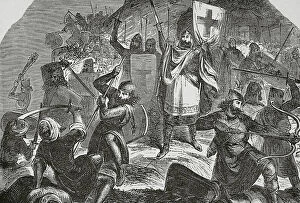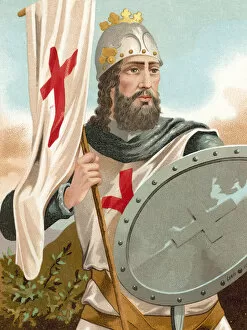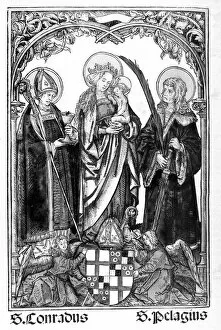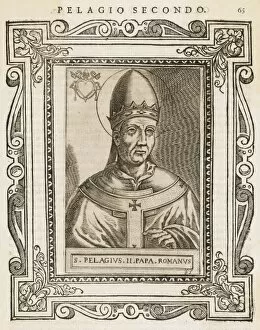Pelagius Collection
Pelagius, a prominent figure in the history of Spain, played a significant role in the Battle of Covadonga in 722
All Professionally Made to Order for Quick Shipping
Pelagius, a prominent figure in the history of Spain, played a significant role in the Battle of Covadonga in 722. This battle marked a crucial turning point as it was the first Christian victory against the Moors during their conquest of the Iberian Peninsula. The Museo Militar commemorates this historic event and showcases artifacts related to Pelagius and other key figures. Various depictions exist of Pelagius, including chromolithographs and engravings from different periods. One such portrayal is an anonymous artwork from 1875-1877 that portrays Pelagius of Asturias, emphasizing his noble status within the Visigothic community. Pelagius (685-737) was not only known for his noble lineage but also for his leadership skills and bravery on the battlefield. His contributions were recognized by six Spanish kings who are mentioned beneath their portraits in Las Glorias Nacionales, published in Madrid and Barcelona in 1852. In addition to his military achievements, Pelagius had a deep devotion to religion. A hand-colored woodcut depicts him alongside Virgin Child Patron Saints Constance, highlighting his faith and spiritual connection. To honor Pelagius' legacy, a monument stands at Covadonga in Asturias—a testament to his pivotal role in defending Christianity against Moorish invaders. Furthermore, there are references connecting Pelagius with Conrad Mary and St. Hugh's coat of arms—symbols representing unity between religious leaders during challenging times like Pope Gregory I's reign when Rome faced devastating plagues around 589 AD.












